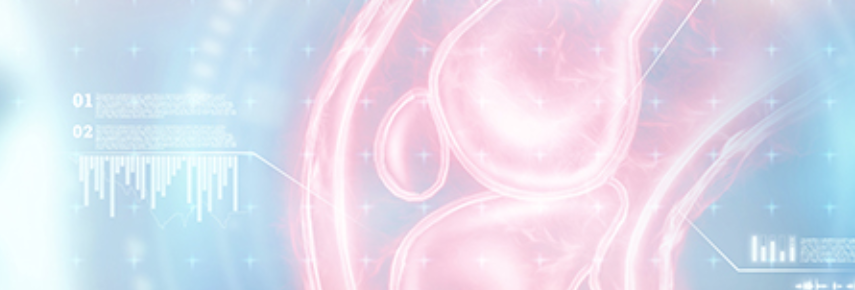Coronary Plaque Characterization with T1-weighted MRI and Near-Infrared Spectroscopy to Predict Periprocedural Myocardial Injury.
IF 4.2
Q1 RADIOLOGY, NUCLEAR MEDICINE & MEDICAL IMAGING
Koji Isodono, Hidenari Matsumoto, Debiao Li, Piotr J Slomka, Damini Dey, Sebastien Cadet, Daisuke Irie, Satoshi Higuchi, Hiroki Tanisawa, Motoki Nakazawa, Yoshiaki Komori, Hidefumi Ohya, Ryoji Kitamura, Tetsuichi Hondera, Ikumi Sato, Hsu-Lei Lee, Anthony G Christodoulou, Yibin Xie, Toshiro Shinke
{"title":"Coronary Plaque Characterization with T1-weighted MRI and Near-Infrared Spectroscopy to Predict Periprocedural Myocardial Injury.","authors":"Koji Isodono, Hidenari Matsumoto, Debiao Li, Piotr J Slomka, Damini Dey, Sebastien Cadet, Daisuke Irie, Satoshi Higuchi, Hiroki Tanisawa, Motoki Nakazawa, Yoshiaki Komori, Hidefumi Ohya, Ryoji Kitamura, Tetsuichi Hondera, Ikumi Sato, Hsu-Lei Lee, Anthony G Christodoulou, Yibin Xie, Toshiro Shinke","doi":"10.1148/ryct.230339","DOIUrl":null,"url":null,"abstract":"<p><p>Purpose To clarify the predominant causative plaque constituent for periprocedural myocardial injury (PMI) following percutaneous coronary intervention: <i>(a)</i> erythrocyte-derived materials, indicated by a high plaque-to-myocardium signal intensity ratio (PMR) at coronary atherosclerosis T1-weighted characterization (CATCH) MRI, or <i>(b)</i> lipids, represented by a high maximum 4-mm lipid core burden index (maxLCBI<sub>4 mm</sub>) at near-infrared spectroscopy intravascular US (NIRS-IVUS). Materials and Methods This retrospective study included consecutive patients who underwent CATCH MRI before elective NIRS-IVUS-guided percutaneous coronary intervention at two facilities. PMI was defined as post-percutaneous coronary intervention troponin T values greater than five times the upper reference limit. Multivariable analysis was performed to identify predictors of PMI. Finally, the predictive capabilities of MRI, NIRS-IVUS, and their combination were compared. Results A total of 103 lesions from 103 patients (median age, 72 years [IQR, 64-78]; 78 male patients) were included. PMI occurred in 36 lesions. In multivariable analysis, PMR emerged as the strongest predictor (<i>P</i> = .001), whereas maxLCBI<sub>4 mm</sub> was not a significant predictor (<i>P</i> = .07). When PMR was excluded from the analysis, maxLCBI<sub>4 mm</sub> emerged as the sole independent predictor (<i>P</i> = .02). The combination of MRI and NIRS-IVUS yielded the largest area under the receiver operating curve (0.86 [95% CI: 0.64, 0.83]), surpassing that of NIRS-IVUS alone (0.75 [95% CI: 0.64, 0.83]; <i>P</i> = .02) or MRI alone (0.80 [95% CI: 0.68, 0.88]; <i>P</i> = .30). Conclusion Erythrocyte-derived materials in plaques, represented by a high PMR at CATCH MRI, were strongly associated with PMI independent of lipids. MRI may play a crucial role in predicting PMI by offering unique pathologic insights into plaques, distinct from those provided by NIRS. <b>Keywords:</b> Coronary Plaque, Periprocedural Myocardial Injury, MRI, Near-Infrared Spectroscopy Intravascular US <i>Supplemental material is available for this article.</i> © RSNA, 2024.</p>","PeriodicalId":21168,"journal":{"name":"Radiology. Cardiothoracic imaging","volume":"6 4","pages":"e230339"},"PeriodicalIF":4.2000,"publicationDate":"2024-08-01","publicationTypes":"Journal Article","fieldsOfStudy":null,"isOpenAccess":false,"openAccessPdf":"https://www.ncbi.nlm.nih.gov/pmc/articles/PMC11375432/pdf/","citationCount":"0","resultStr":null,"platform":"Semanticscholar","paperid":null,"PeriodicalName":"Radiology. Cardiothoracic imaging","FirstCategoryId":"1085","ListUrlMain":"https://doi.org/10.1148/ryct.230339","RegionNum":0,"RegionCategory":null,"ArticlePicture":[],"TitleCN":null,"AbstractTextCN":null,"PMCID":null,"EPubDate":"","PubModel":"","JCR":"Q1","JCRName":"RADIOLOGY, NUCLEAR MEDICINE & MEDICAL IMAGING","Score":null,"Total":0}
引用次数: 0
Abstract
Purpose To clarify the predominant causative plaque constituent for periprocedural myocardial injury (PMI) following percutaneous coronary intervention: (a) erythrocyte-derived materials, indicated by a high plaque-to-myocardium signal intensity ratio (PMR) at coronary atherosclerosis T1-weighted characterization (CATCH) MRI, or (b) lipids, represented by a high maximum 4-mm lipid core burden index (maxLCBI4 mm) at near-infrared spectroscopy intravascular US (NIRS-IVUS). Materials and Methods This retrospective study included consecutive patients who underwent CATCH MRI before elective NIRS-IVUS-guided percutaneous coronary intervention at two facilities. PMI was defined as post-percutaneous coronary intervention troponin T values greater than five times the upper reference limit. Multivariable analysis was performed to identify predictors of PMI. Finally, the predictive capabilities of MRI, NIRS-IVUS, and their combination were compared. Results A total of 103 lesions from 103 patients (median age, 72 years [IQR, 64-78]; 78 male patients) were included. PMI occurred in 36 lesions. In multivariable analysis, PMR emerged as the strongest predictor (P = .001), whereas maxLCBI4 mm was not a significant predictor (P = .07). When PMR was excluded from the analysis, maxLCBI4 mm emerged as the sole independent predictor (P = .02). The combination of MRI and NIRS-IVUS yielded the largest area under the receiver operating curve (0.86 [95% CI: 0.64, 0.83]), surpassing that of NIRS-IVUS alone (0.75 [95% CI: 0.64, 0.83]; P = .02) or MRI alone (0.80 [95% CI: 0.68, 0.88]; P = .30). Conclusion Erythrocyte-derived materials in plaques, represented by a high PMR at CATCH MRI, were strongly associated with PMI independent of lipids. MRI may play a crucial role in predicting PMI by offering unique pathologic insights into plaques, distinct from those provided by NIRS. Keywords: Coronary Plaque, Periprocedural Myocardial Injury, MRI, Near-Infrared Spectroscopy Intravascular US Supplemental material is available for this article. © RSNA, 2024.
利用 T1 加权磁共振成像和近红外光谱分析冠状动脉斑块特征,预测围手术期心肌损伤。
目的 明确经皮冠状动脉介入术后围术期心肌损伤(PMI)的主要致病斑块成分:(a) 红细胞衍生物质,表现为冠状动脉粥样硬化 T1 加权磁共振成像(CATCH)上斑块与心肌信号强度比(PMR)较高;或 (b) 脂质,表现为近红外光谱血管内超声(NIRS-IVUS)上最大 4 mm 脂质核心负荷指数(maxLCBI4 mm)较高。材料与方法 这项回顾性研究纳入了在两家医院接受 NIRS-IVUS 引导的经皮冠状动脉介入治疗前接受 CATCH MRI 的连续患者。PMI定义为经皮冠状动脉介入治疗后肌钙蛋白T值超过参考上限的五倍。进行了多变量分析以确定 PMI 的预测因素。最后,比较了 MRI、NIRS-IVUS 及其组合的预测能力。结果 共纳入 103 名患者(中位年龄 72 岁 [IQR,64-78];78 名男性患者)的 103 个病灶。36 个病灶出现 PMI。在多变量分析中,PMR 是最强的预测因子(P = .001),而 maxLCBI4 mm 并非显著的预测因子(P = .07)。当分析中排除 PMR 时,maxLCBI4 mm 成为唯一的独立预测因子(P = .02)。MRI 和 NIRS-IVUS 的组合产生了最大的接收器工作曲线下面积(0.86 [95% CI: 0.64, 0.83]),超过了 NIRS-IVUS 单独使用时的面积(0.75 [95% CI: 0.64, 0.83]; P = .02)或 MRI 单独使用时的面积(0.80 [95% CI: 0.68, 0.88]; P = .30)。结论斑块中的红细胞衍生物质在 CATCH MRI 中表现为高 PMR,与 PMI 密切相关,与血脂无关。核磁共振成像可对斑块提供不同于近红外光谱的独特病理学见解,从而在预测 PMI 方面发挥关键作用。关键词:冠状动脉斑块冠状动脉斑块 围手术期心肌损伤 MRI 近红外光谱血管内超声 这篇文章有补充材料。© RSNA, 2024.
本文章由计算机程序翻译,如有差异,请以英文原文为准。

 求助内容:
求助内容: 应助结果提醒方式:
应助结果提醒方式:


